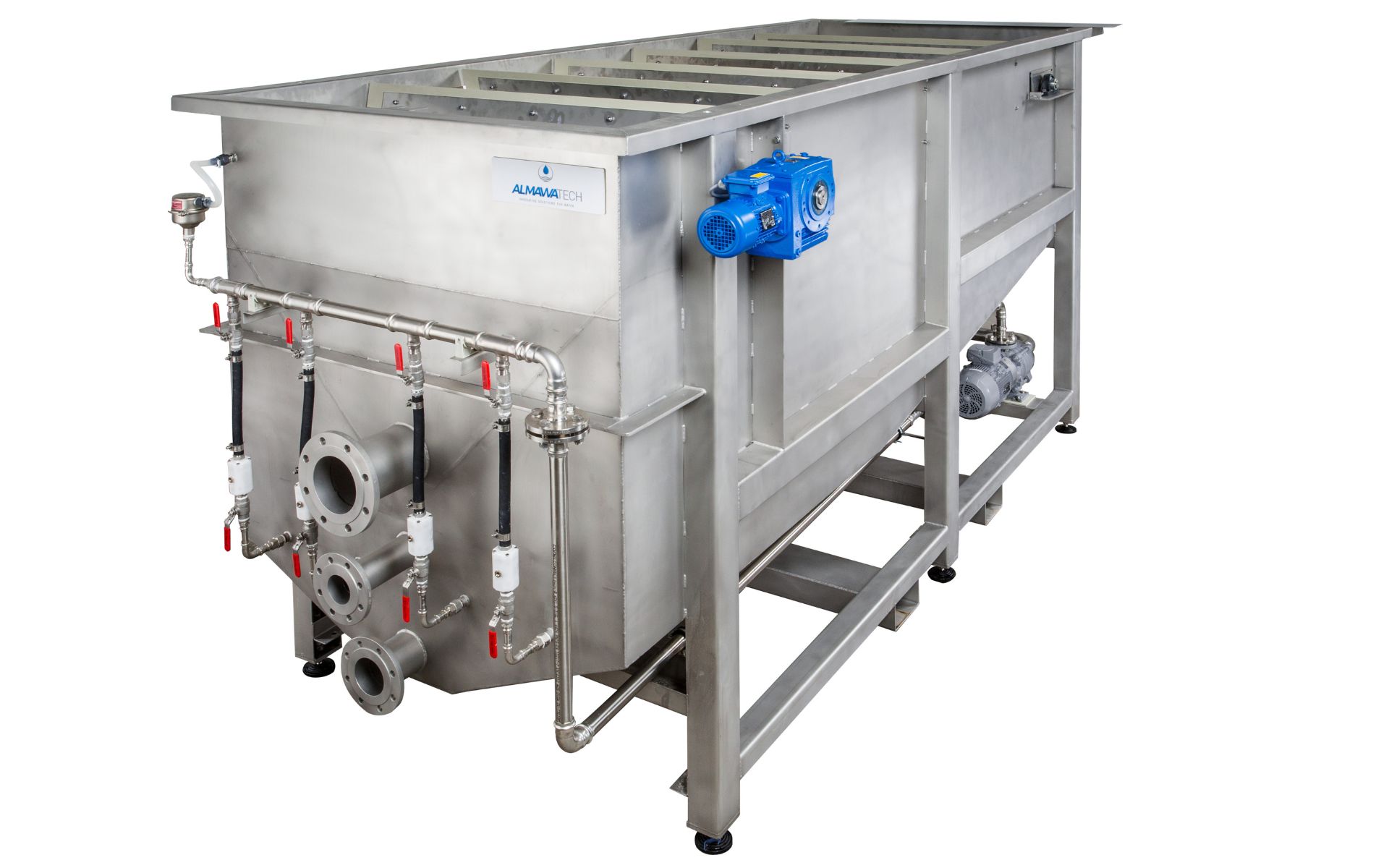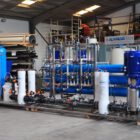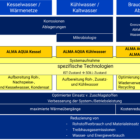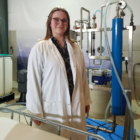Oil separators are essential system components in industrial water and wastewater treatment. They are used to separate water from immiscible liquids such as mineral oils, light oils and other hydrocarbons. These substances often enter wastewater streams through industrial processes, vehicle maintenance or rainwater runoff. An oil separator not only protects the environment, but also contributes to compliance with legal requirements and the protection of downstream systems.
This article provides a very detailed and practice-oriented explanation of oil separators, including the chemical-physical principles, technical operating principles, applications and challenges.
Table of contents
Basics of oil separation
Definition and functional principle
An oil separator is a technical system based on the difference in density between water and oils or light liquids. As oils and light liquids have a lower density than water, they float on the surface where they can be separated mechanically.
Important physical principles:
- Gravity separation:
- Based on the difference in density between water and oil (typically 0.7-0.9 g/cm³ for oil and 1 g/cm³ for water).
- Coalescence:
- Small oil droplets combine to form larger droplets, which rise more easily due to the lower flow resistance.
- Laminar flow:
- Minimization of turbulence in the separator to facilitate separation.
Types of oil separators
Oil separators are divided into different types based on their design and function. Each type is designed for specific applications and loads.
1. free-flow oil separator (API separator)
- Functionality:
- The wastewater flows through a large rectangular tank in which gravity causes the separation of oil and water.
- Areas of application:
- Refineries, petrochemicals, workshops.
- Advantages:
- High capacity for large wastewater flows.
- Disadvantages:
- Begrenzte Effizienz bei kleinen Öltröpfchen (<150 Mikrometer).
2. coalescence separator
- Functionality:
- Use of coalescence modules that promote the aggregation of small oil droplets to increase separation efficiency.
- Areas of application:
- Rainwater treatment, filling stations, industrial processes.
- Advantages:
- High efficiency in removing small oil droplets.
- Disadvantages:
- Regular cleaning of the coalescence modules is required.
3. lamella separator oil separator
- Functionality:
- Use of inclined vanes to promote oil-water separation by extending the flow path.
- Areas of application:
- Chemical industry, metal processing.
- Advantages:
- Compact design and high separation performance.
- Disadvantages:
- Higher maintenance costs.
4. flotation plants
- Functionality:
- Fine air bubbles are introduced into the waste water to increase the buoyancy of the oil droplets.
- Areas of application:
- Heavily contaminated wastewater with emulsions.
- Advantages:
- Significantly higher cleaning performance.
- Disadvantages:
- Increased energy requirement compared to simple oil separators

Photo: Our patented ALMA NeoDAF flotation system
Components of an oil separator
An oil separator consists of several components that optimize separation performance and ensure reliable operation.
- Inlet area:
- Calms the flow and prevents turbulence that could interfere with oil separation.
- Separation chamber:
- Main area for oil-water separation based on density differences or coalescence.
- Coalescence modules (optional):
- Increase efficiency by stimulating small oil droplets to aggregate.
- Oil collection room:
- Collecting container for the separated oil, which is removed later.
- Water outlet:
- Controls the drainage rate and minimizes the entrainment of residual oil.
Applications of oil separators
Oil separators are used in many industries to improve wastewater quality and comply with legal requirements.
1. vehicle and workshop operations
- Problem: Oil residue from vehicle maintenance and cleaning.
- Solution: Coalescence separator to remove residual oil and hydrocarbons.
2. rainwater treatment
- Problem: Runoff from roads and parking lots contains hydrocarbons.
- Solution: Coalescence or lamella separator to comply with the discharge limits.
3. petrochemical industry
- Problem: High concentrations of crude oil and light oils in the process wastewater.
- Solution: API separators or flotation units for effective separation.
4. metal processing and electroplating
- Problem: Emulsified oils and lubricants in wastewater.
- Solution: Flotation and coalescence systems, combined with chemical pre-treatment.
Challenges and solutions
1. treatment of emulsified oils
- Problem: Chemically stabilized emulsions are difficult to separate by gravity.
- Solution: Use of flotation or chemical pre-treatment (flocculation, pH adjustment).
2. maintenance and cleaning
- Problem: Deposits and fouling reduce efficiency.
- Solution: Regular inspections and cleaning of the modules and the oil collection area.
3. fluctuating wastewater flows
- Problem: High volume fluctuations lead to inefficient separation.
- Solution: Installation of buffer tanks and flow regulators.
Conclusion
Oil separators are indispensable systems in industrial water and wastewater treatment. They ensure the effective removal of oils and light liquids, protecting the environment and plants and enabling compliance with legal requirements. Through the targeted use of modern technologies such as coalescence separators or flotation systems, even wastewater that is difficult to treat can be processed reliably. The continuous development of these technologies helps to further improve the efficiency and sustainability of water treatment.
For further information on our products, please feel free to contact us at any time!








